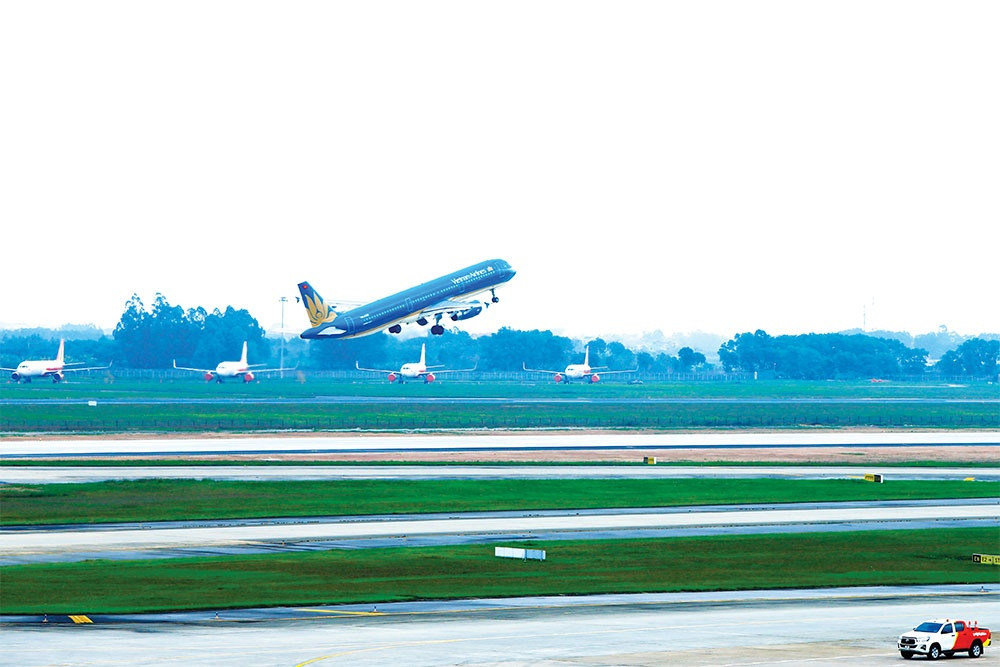 |
The Ministry of Transport (MoT) recently wrote to Le Van Thanh, Deputy Prime Minister and head of the government’s working group which was established at the end of September, about researching the conversion of the Bien Hoa and Thanh Son military airports into civil ones.
The MoT has outlined a detailed research plan for four airports, namely Na San in Son La province, Vinh in Nghe An province, Chu Lai in Quang Nam province and Can Tho in Can Tho, which are included in a project of airport investment and exploitation under the public-private partnership (PPP) model.
The plan also covers Tho Xuan Airport in Thanh Hoa province and Lien Huong Airport in Lam Dong province, which have been proposed by the local authorities for expansion and upgrades. The research on these airports will be carried out from now until December 15.
Accordingly, a cargo terminal area and aviation logistics area will be the key focus of Can Tho Airport. Meanwhile, other airports will concentrate on expanding passenger terminals, extending runways, and adding aprons to increase operating capacity and accommodate larger planes.
On September 24, the Government Office detailed DPM Thanh’s remarks at the meeting on planning and raising funds for a number of airports and airfields.
DPM Thanh tasked the relevant provincial and municipal people’s committees with conducting investment research to evaluate these airports’ technical and economic efficiency as well as their capacity to mobilise capital.
“After completing the procedures, the localities work with the MoT to submit proposals to the prime minister for review and approval. Thus, the localities can act as competent agencies to implement the projects,” the deputy prime minister added.
In August, Nghe An People’s Committee wrote to the prime minister about the policy of attracting private investment into airport projects and adjust the planning of Vinh International Airport.
The local authorities noted that they had received proposals from some investors to develop the T2 passenger terminal project with a capacity of 10 million passengers per year, a second runway, and cargo terminals as well as other ancillary items.
If approved, these investors would like to deploy the projects before 2025 to transform this airport into a grade 4E civil airport, which is the second-highest level according to the classification by the International Civil Aviation Organization.
Nghe An People’s Committee has called for the government to address three issues for the project.
Firstly, the government should consider greenlighting the policy of attract private investment for Vinh International Airport under the PPP model.
Secondly, the government should assign the provincial People’s Committee as the competent authority to implement the project.
Thirdly, the government must approve the capacity adjustment of the airport in the draft master plan for the development of airports in the 2021-2030 period with a vision to 2050.
The Civil Aviation Authority of Vietnam (CAAV) has proposed for Airports Corporation of Vietnam (ACV) to transfer the essential infrastructure works of some airports in remote and isolated areas to localities.
The new airports should be deployed under the PPP model to mobilise social capital. Meanwhile, the People’s Committees will serve as the competent authority to mobilise and balance the resources needed to deploy the projects.
To speed up the process, the CAAV has suggested the MoT report to the prime minister so that relevant ministries and departments can be directed to review and amend legal provisions and documents such as the laws on land, investment, construction, civil aviation, and management of state assets. This will help to create a favourable legal framework for asset transfer, valuation, and bidding to select investors under the PPP model.
In addition, the Commission for the Management of State Capital at Enterprises should formulate a plan to handle ACV’s existing assets at the airports. These assets are expected to be given to localities that are qualified to carry out PPP investment.
Source: VIR